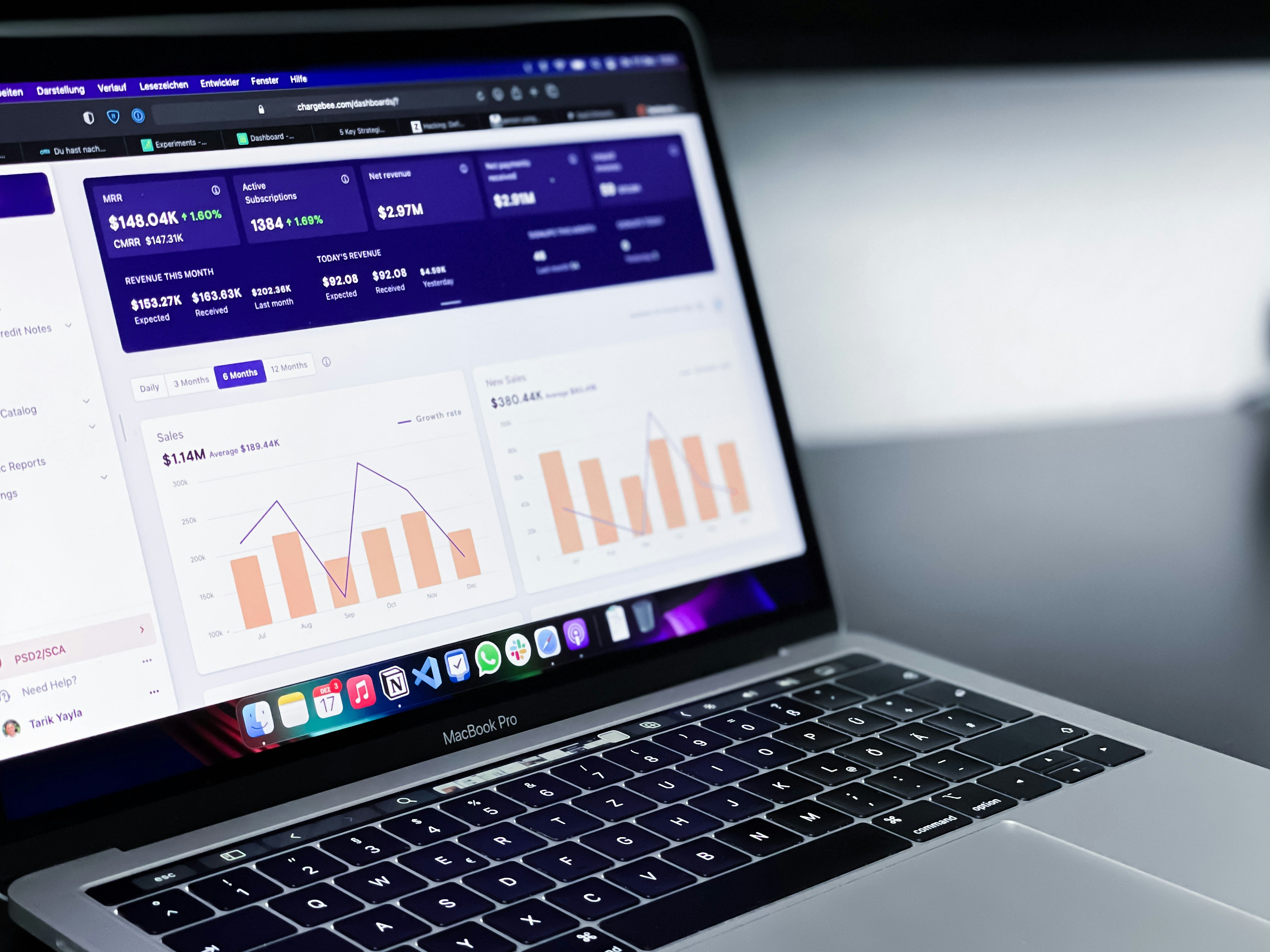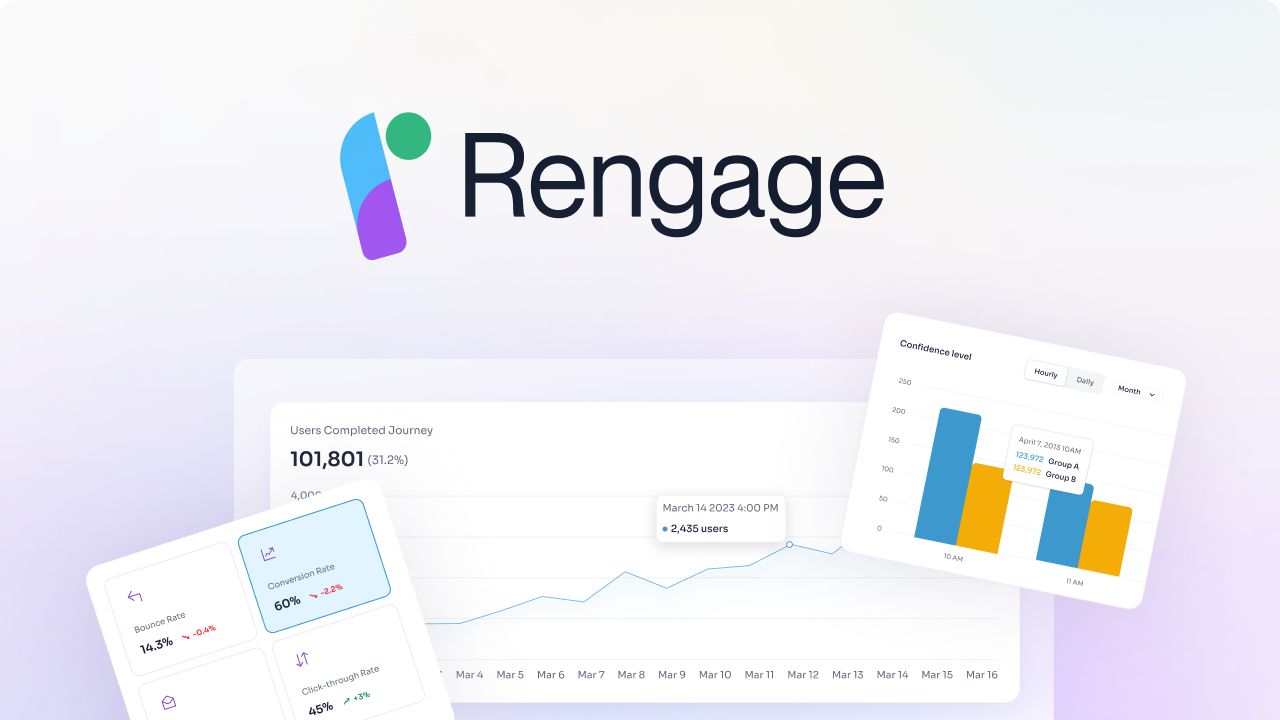Customer journey analytics is crucial for every business striving to enhance customer experience and obtain valuable insights. By effectively analyzing customer touchpoints from initial contact to long-term loyalty, companies can optimize their marketing strategies and improve their sales. Customer lifecycle management, having the ability to recognize the customer's journey from start to finish, offers endless opportunities for growth and improvement. With the right tools and practices, businesses can utilize these insights to strengthen relationships with their customers and boost their brand. Learn more about the immense benefits of customer journey analytics in this blog post.
What Is Customer Journey Analytics?

Customer Journey Analytics is the process of analyzing the customer experience across every touchpoint in the customer journey. Machine learning, python, and various software tools like Adobe or Woopra are used to thoroughly measure customer interaction. This allows brands to gain a bird’s-eye view of what the entire customer journey looks like.
By following the touchpoints leading up to a conversion, companies can identify friction points that may disrupt the customer journey and see what’s contributing to customer success and loyalty, as well as customer churn. This approach removes the guesswork from how someone transitions from being a prospect to a lead to a paying customer and beyond. Instead, customer journey analytics enables companies to objectively and quantitatively measure the entire process.
Related Reading
Benefits of Using Customer Journey Analytics

Companies utilize customer journey analytics to better understand the entire customer journey. This allows them to identify the various touchpoints a customer interacts with before making a purchase. By gaining this holistic perspective, businesses can improve the customer experience, pinpointing strengths and weaknesses in their current processes. This insight allows them to make data-driven decisions to enhance customer satisfaction and meet expectations.
Conversions with Enhanced Customer Journeys
Understanding the end-to-end customer journey and improving the overall customer experience can increase conversions. For instance, by identifying bottlenecks hindering leads from converting into customers, companies can experiment with different initiatives until finding one that works.
This leads to improved customer retention and loyalty, as a smooth customer journey contributes to a positive first impression. Satisfied customers are more likely to remain loyal, decrease churn rates, and possibly become brand ambassadors.
Driving Revenue Growth through Customer-Centric Approaches
Utilizing customer journey analytics can drive revenue growth. Customer-centric companies are proven to be 60% more profitable than those that aren't, according to a Deloitte study. 86% of customers are willing to spend more on products for a great customer experience. By understanding customer behavior and the nuances of the customer journey process, businesses can drive bigger profits.
Unlocking Revenue with Comprehensive Customer Journey Management
We provide a comprehensive solution for managing and enhancing customer journeys, delivering insights and measurable outcomes with no code. We accelerate your customer journey from onboarding, activation to conversion and churn. Enabling customers to unlock revenue from their existing user.
With Rengage, you can get insights into your segments, run campaigns with an intuitive journey manager, and get insights to measure how your journeys impact users conversion through our Journey Moments and Journey Builder features.
- Journey Moments: insights into your micro-segments
- Journey Builder: intuitive multi-channel marketing automation
- Insights prediction and attribution.
Book a free demo to learn about how you can transform customer interactions into personalized experiences that drive loyalty and growth.
The 5 Stages of the Customer Journey

1. Awareness Stage
During the awareness stage, customers realize they have a problem. They may not know they need a product or service, but they will begin researching either way. During this stage of the customer journey, brands should deliver educational content to help customers diagnose problems and offer potential solutions. Your aim should be to help customers alleviate their pain points, not encourage a purchase.
During the awareness stage, you can lean on page view and click data to uncover which web pages and blog posts on your site customers flock to as they become aware of the need to solve a problem.
Some educational content that I’ve created in the past are
- How-to articles and guides
- General whitepapers
- General ebooks
- Free courses
Educational content may also be delivered via customer touchpoints such as
- Your blog
- Social media
- Search engines
2. Consideration
In the consideration stage, customers have researched enough to realize they need a product or service. At this point, they begin to compare brands and offerings.
During this stage, brands should deliver product marketing content to help customers compare different offerings and, eventually, choose their product or service. The aim is to help customers navigate a crowded marketplace and move them toward a purchase decision.
Product marketing content may include
- Product listicles
- Product comparison guides and charts
- Product-focused white papers
- Customer success stories or case studies
Product marketing content may be delivered via customer touchpoints such as
- Your blog
- Your website
- Search engines
- Social media
- Conferences
3. Decision Stage
During this stage, your brand should deliver a seamless purchase process to make buying products as easy as possible. I wouldn’t recommend any more educational or product content at this stage — it’s all about getting customers to make a purchase. That means you can be more direct about wanting customers to buy from you.
Decision-stage content may include
- Free demos
- Free consultations
- Product sign-up pages
- Pricing pages
- Product promotions (e.g., “Sign up now and save 30%)
Decision-stage content may be delivered via customer touchpoints such as
- Your website
- Search engines
4. Retention Stage
In the retention stage, customers have purchased a solution and will stay with the company they purchased it from instead of switching to another provider.
During this stage, brands provide an excellent onboarding experience and ongoing customer service to ensure customers don’t churn. During the retention stage, you can rely on solicited data from customer surveys and questionnaires to continually refine and improve the customer experience and your customer journey map.
Retention-stage strategies may include
- Providing a dedicated customer success manager
- Making your customer service team easily accessible
- Creating a knowledge base in case customers ever run into a roadblock
Retention-stage strategies may be delivered via customer touchpoints such as
- Your website
- Live chat
- Social media
5. Loyalty Stage
In the loyalty stage, customers not only choose to stay with a company but actively promote it to family, friends, and colleagues. This stage can also be called the advocacy stage. During this phase, brands should focus on providing a fantastic end-to-end customer experience. This should span from your website content to your sales reps, your social media team, and your product’s UX.
Most importantly, customers become loyal when they’ve succeeded with your product — if it works, they’re more likely to recommend your brand to others. Loyal customers will also likely provide feedback and other solicited data to enrich your customer journey mapping strategy.
Loyalty-stage strategies may include
- Having an easy-to-navigate website.
- Investing in your product team to ensure your product exceeds customer expectations.
- Making it easy to share your brand with others via a loyalty or referral program.
- Providing perks to continued customers, such as discounts.
Loyalty-stage strategies may be delivered via customer touchpoints such as:
- Your website
- Social media
- Your products
18 Top Customer Journey Analytics Software in 2024
1. Rengage: Transform Customer Interactions into Personalized Experiences

Rengage offers a comprehensive solution for managing and enhancing customer journeys, delivering insights and measurable outcomes without the need for code. This software accelerates the customer journey from onboarding to conversion, enabling customers to unlock revenue from existing users.
With Rengage, users gain insights into segments, run campaigns with an intuitive journey manager, and measure how journeys impact conversion rates through features like Journey Moments and Journey Builder.
2. QuestionPro: Collect, Analyze, and Act on Customer Feedback
QuestionPro provides a comprehensive suite of tools for collecting, analyzing, and acting on customer feedback throughout their journey. This software offers advanced survey capabilities, feedback management, and analytics to understand customer sentiment and behavior effectively.
3. Insider: Optimize Customer Journeys with AI-driven Predictive Analytics
Insider is a platform that combines AI-driven predictive analytics, segmentation, and personalization to optimize customer journeys. By delivering individualized experiences at every touchpoint, businesses can increase engagement and conversions effectively.
4. HubSpot Marketing Hub: Track Interactions, Automate Marketing Campaigns, and Manage Sales Pipelines
HubSpot Marketing Hub offers a robust CRM platform with integrated marketing, sales, and service tools. This software allows industries to track interactions, automate marketing campaigns, manage sales pipelines, and provide personalized support, all within a single platform.
5. Contentsquare: Capture and Analyze Customer Interactions Across Channels
Contentsquare is a digital experience analytics platform that captures and analyzes customer interactions across web and mobile channels. Users can gain insights into customer behaviors, conversion pathways, and content effectiveness, facilitating the optimization of digital experiences effectively.
6. Mixpanel: Track User Interactions and Optimize Product Features
Mixpanel is an advanced analytics platform that focuses on product and user behavior analytics. Businesses can use this software to track user interactions, analyze engagement, and optimize product features to drive growth and retention efficiently.
7. Glassbox: Understand User Behavior and Identify Issues
Glassbox is a digital experience analytics platform that captures and replays website and app sessions to understand user behavior and identify issues. This software provides insights into customer journeys, conversion funnels, and usability challenges effectively.
8. Hotjar: Gain Valuable Insights with Heatmaps and Session Recordings
Hotjar offers tools tailored for website and user feedback, including heatmaps, session recordings, and surveys. These tools provide valuable insights into user interactions with websites, enabling businesses to pinpoint areas for enhancement within the customer journey efficiently.
9. WebEngage: Drive User Engagement Across Channels
WebEngage is a customer engagement platform that combines marketing automation, personalization, and analytics to drive user engagement across channels. This software helps businesses deliver relevant messages and experiences based on user behavior and preferences effectively.
10. Woopra: Real-time Insights into Customer Behavior and Engagement
Woopra is a customer journey analytics software that tracks and analyzes user interactions across multiple touchpoints. Users can gain real-time insights into customer behavior, segmentation, and engagement, optimizing marketing and product strategies efficiently.
11. Salesforce: Foster Cohesive Customer Experiences Across Interaction Points
Salesforce is a leading CRM platform that offers various customer journey analytics tools and capabilities. This software empowers businesses to monitor interactions, automate marketing initiatives, tailor communications, and deliver cohesive customer experiences across every interaction point effectively.
12. SurveySparrow: Gather, Analyze, and Respond to Customer Feedback
SurveySparrow is a robust survey and feedback management platform designed to assist businesses in gathering, analyzing, and responding effectively to customer feedback. With advanced survey features, customization options, and analytics, users can understand customer sentiments and preferences efficiently.
13. ChurnZero: Predict and Prevent Customer Churn with Real-time Data and Automation
ChurnZero is a powerful customer success platform focused on reducing customer churn by helping businesses understand their customers better. By using real-time data, automated tasks, and customer segmentation, this software can predict and prevent customer churn, aligning with its recognition for being best at predicting and reducing customer churn.
14. Quantum Metric: Gain In-depth Insights into Customer Online Behavior
Quantum Metric is a digital intelligence platform that helps businesses gain in-depth insights into their customers' online behavior. This software allows users to track and analyze customer interactions across various venues in real-time, comprehensively understanding the customer journey.
15. Segment: Streamline Multi-channel Data Collection with Ease
Segment is a versatile tool that assists businesses in aggregating data from multiple channels and presenting it in an easy-to-understand format. By handling challenging data collection and collation tasks efficiently, this software is ideal for businesses seeking to streamline their multi-channel data collection process.
16. Pendo.io: Understand and Improve In-App User Engagement
Pendo.io is a robust product experience platform that offers valuable insights on in-app user engagement. Particularly well-equipped to understand user behavior within applications, this tool is an ideal choice for businesses aiming to track and improve in-app user engagement effectively.
17. HCL Software: Deliver Meaningful Insights with Robust Data Analytics
HCL Software is a comprehensive solution that delivers robust data analytics and insights. With versatile analysis features, this software is a preferred choice for businesses dealing with vast amounts of data and requiring meaningful insights effectively.
18. Google Analytics: Track User Behavior on Different Platforms
Google Analytics is a widely used website analytics software that enables users to track user behavior on various platforms, including mobile applications. Features like daily traffic reporting give insight into visitor engagement effectively. The Analytics Amplifier can combine Google Analytics and HubSpot data to enhance analytics capabilities further.
Related Reading
- Digital Customer Journey Mapping
- Customer Journey Analysis
- Ecommerce Customer Journey
- B2B Customer Journey
- Customer Journey Orchestration
- Omnichannel Customer Journey
- Saas Customer Journey
- Marketing Automation Customer Journey
- Customer Journey Optimization
- Micro Moments Customer Journey
- Customer Journey Research
- Customer Journey Automation
- Customer Journey Insights
- Customer Journey Dashboard
- Customer Journey Personalization
- Customer Journey Metrics
- Customer Journey Best Practices
How To Choose Customer Journey Analytics Software

Choosing the Right Customer Journey Analytics Software
When it comes to choosing the right customer journey analytics software, businesses can benefit in three key ways:
- By gaining deeper insights into customer behavior
- Improving personalized customer experiences
- Enhancing overall customer satisfaction.
To effectively select the best tool for your business needs, you should consider several key features and capabilities.
Identifying the Customer Journey Analytics Feature Gap
Start by identifying the customer journey analytics feature gap you're trying to fill to clarify the features and functionality the software needs to provide. This will help you choose a tool that addresses the specific needs of your business.
Considering Users and Licenses
Evaluate who will be using the software and how many licenses you'll need. Determine if it will be customer service teams only or the entire organization. This consideration can help you prioritize ease of use and speed for different user groups.
Integration with Other Tools
Clarify what tools you're replacing, what tools are staying, and what tools need to integrate with the customer journey analytics software. Decide if the tools need to integrate together or if you can consolidate multiple tools into one platform.
Defining Important Outcomes
Think about the results the software needs to deliver to be considered a success. Consider the capabilities you want to gain or improve, and how you will measure success. Understand the outcomes you want to drive to avoid wasting time comparing features without a clear goal.
Fit within Your Organization
Consider how the software selection aligns with your workflows and delivery methodology. Evaluate what's working well and what areas need improvement. That every business is unique, so don't assume that a popular tool will work seamlessly without considering your business's specific needs and workflows.
Comparing Customer Journey Analytics and Customer Journey Mapping

Customer journey analytics and customer journey mapping are often confused with each other. Although they’re complementary, customer journey mapping visually presents customer journey stages from start to finish, while customer journey analytics offers data about a customer’s interactions in each stage.
Customer journey maps often include the following:
1. The buying process
By pulling data from places like CMS and prospecting tools, you will be able to figure out what goes into a customer’s purchasing process.
2. User actions
This part of the customer journey map details the actions the customer takes throughout their journey.
3. Emotions
Emotions help color your understanding of how your customer is feeling and reacting as they go through their journey with your business.
4. Pain points
Adding pain points to your customer journey map gives you a comprehensive picture of the challenges your customer may experience.
5. Solutions
Figuring out solutions can help your customers experience fewer pain points. The data and insights you’ve gathered can help inform your solutions.
Customer journey analytics delves deeper. The customer journey map is the “what” and customer journey analytics is the “why” because it organizes customer or prospect data around each stage.
Customer Journey Map vs. Analytics Example
Let’s say your business offers CMS tools and your ideal customer, a graphic design firm, finds you through a targeted Instagram ad.
In the customer journey map you’ve built, your target customer considers using your CMS tools to build a new website that showcases their strengths. They schedule a demo before trying the free version and are initially excited, but become frustrated with the limited design elements offered by the free version. Their biggest pain point quickly becomes lack of versatility. They then look into purchasing the paid version or go to a cheaper competitor.
Customer Experiences with Real-Time Analytics
With customer journey analytics, you’ll apply real-time data to that map: From journey mapping, you’ve identified the steps your customer often takes and their common pain points. A strong customer journey analytics tool can then collect, aggregate, synthesize, and visualize data to help you make sense of your customer’s actions and see if your mapping and journey-based strategies work.
For example, data might show how your customer is interacting with your product.
A good Customer Journey Analytics platform combines data like user data, survey results, and website analytics, you can gain a comprehensive view of why your customer is experiencing those pain points and consequently address their concerns.
Related Reading
- Customer Lifecycle Management Software
- Customer Journey Mapping Tools
- Customer Journey Management
- Braze Alternative
- Fullstory Alternatives
- Adobe Analytics Alternatives
- Customer Journey Analytics Tools
- Iterable Competitors
- Marketo Alternatives
- Onesignal Alternatives
- Clevertap Alternatives
- Bloomreach Alternatives
- Customer.io Alternatives
Create Personalized Experiences That Drive Loyalty and Growth with Rengage — Book A Free Demo Today
Rengage offers a game-changing solution for businesses seeking to optimize customer journeys, drive conversions, and boost revenue with seamless insights and measurable outcomes. Our platform is designed to empower organizations to elevate their customer experiences from initial onboarding and activation to conversion and retention, all without the need for extensive coding. By leveraging Rengage, companies can tap into their existing user base and unlock hidden revenue potential.
Gain Insights into User Segments with Journey Moments
Journey Moments feature offers invaluable insights into micro-segments within your user base. By understanding these segments better, you can tailor your marketing efforts to meet the specific needs and preferences of each group, creating more personalized and engaging customer experiences.
With Journey Moments, you can identify trends, patterns, and opportunities that might have gone unnoticed, allowing you to fine-tune your strategies for maximum impact.
Build Seamless Customer Journeys with Journey Builder
Our Journey Builder tool enables businesses to orchestrate multi-channel marketing campaigns with ease. This intuitive platform allows you to create, customize, and automate customer journeys across various touchpoints, ensuring a seamless experience for users at every stage of their interaction with your brand.
By leveraging Journey Builder, you can enhance user engagement, drive conversions, and boost overall customer satisfaction, leading to increased loyalty and long-term growth.
Measure the Impact of Your Efforts with Insights Prediction and Attribution
Rengage provides deep insights into how your customer journeys impact user conversion rates through its Insights Prediction and Attribution feature. By analyzing user behavior, campaign performance, and other key metrics, you can gain a clear understanding of what works and what doesn't in your marketing efforts.
This allows you to refine your strategies, optimize your campaigns, and drive better results over time, ensuring that your customer journey analytics efforts are both effective and efficient.
Transform Customer Interactions with Personalized Experiences
By leveraging Rengage's comprehensive customer journey analytics solution, businesses can transform ordinary interactions into personalized experiences that drive customer loyalty and growth. Our platform offers the tools and insights needed to deliver targeted, relevant content to users, boosting engagement, conversions, and overall satisfaction.
Book a free demo today to learn how Rengage can help you unlock revenue, optimize customer journeys, and achieve your growth objectives like never before.
